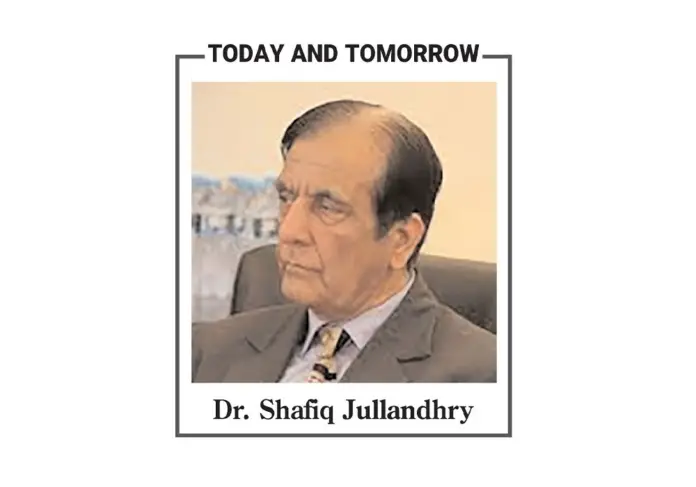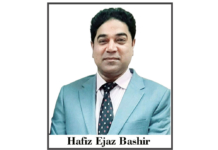We know how dominant the role of communication is in our lives, from birth to death and from thinking to action. Along with our five senses, humans have used different means of communication to make themselves more effective. How they created words and languages as the standbys of their meaning and what sparkling role symbols play in human life is a vast area of scientific study. However, in this discourse, I would like to recall major developments in communication that I have observed in my life. But before that, quite a brief mention of that communication development that had already taken place before my birth. We know that the printing press was invented by Gutenberg in 1450 and came to the sub-continent somewhere in 1614. Newspapers and magazines started publishing in the middle of the eighteenth century. The first daily newspaper in the world was “The Pennsylvania Packet and Daily Advertiser”. It started its publication on September 21, 1784. India’s first English newspaper was Hicky’s Bengal Gazette, founded by James Augustus Hicky on January 29th, 1780. The first Urdu newspaper, “Jam e Jahan Numa,” was started by Harihar Dutte in 1822. The secret information service was already very strong in the regime of the Mughals. Secret agents were sending their newsletters regularly to the Emperor from the four corners of his empire. The same pattern was adopted by the British Indian Government for public postal service.
The telegraph line was opened in October 1851 in India between Calcutta and Diamond Harbour, a distance of 30 miles. The official inauguration of this line took place on November 1, 1851. By 1854, Calcutta was linked with Agra, Bombay, and Madras by a telegraph network. The StateBroadcasting Service was started in India on April 1, 1930. It was given the name All India Radio on June 8, 1936. The film industry started in 1912. The first Pakistani feature film, “Tery Yaad”, was released on August 7, 1948. The first successful film in Pakistan was “Do Ansoo”, released on April 7, 1950. I was born three months and nine days before Radio Pakistan started its broadcast on August 14, 1947. Naturally, I started listening to the radio after the age of five years in 1952. The Urdu newspaper “Kohistan”was supplied by a hawker to our house, which changed to the daily “Mashriq” after some years. I was fond of the monthly children’s magazine “Taleem o Tarbiat” that was received by mail. I used to wait impatiently for the mail near the date of receiving the magazine. That made the mail service and postman very important to me. My father used to show his impatience by waiting for the newspaper every morning. We had a radio set of size 2X1.5 feet. It had a beautiful cloth cover on it and it remained in our drawing room, where many other people from the community liked to come to listen to it during the news bulletin time.
There was a big battery of 5X0.5-foot size lying beside this radio, which supplied power to run it. For catching the radio waves, two bamboo sticks were fixed at the top of our roof, and a wire called an antenna was fixed with these sticks on the other side. This wire was connected to it. At night time, there were very interesting dramas and feature programs on the radio. After finishing our school work, we got some free time for these dramas. Our Jalandhar and Amritsar radio stations were also within reach of our radio sets, and we liked to listen to Sundar Kore’s Geets and other funny programs. Nevertheless, our parents were not in favour of us listening to film songs on the radio. They considered them vulgar, and we were not of that taste. However, feature films in our school days had a great attraction for us. We rarely got permission to go watch Pakistani films like “Bedaari” and “Chengaiz Khan” etc. Our other hobbies were the playgrounds where we could play football, volleyball, badminton, table tennis, etc. In May 1963, I learned to type on a very old typing machine and made my speed around forty words per minute. It helped me very much throughout my studies and professional work. I remember that there was no electricity in my town, Toba Tek Singh, until 1954.
People like to use hand fans to cool them. There were no call bells. People were always knocking on others’ doors when they wanted to call them to talk about something. The period from 1955 to 1980 was a period when telephone and telegram services were available, but they were too expensive and people made use of these services only in case of some urgent need. There were no cell phones. Even so, it was very difficult for businessmen to get fixed PTCL phones. In this period, the Pakistani rupee was a strong currency. People used to send a telegram for any urgent matter, like informing their relatives about a family member’s death. In that strong currency era, the rate of the telegram was a quarter rupee per word. Then in the decade of the seventies came fax technology. It made it possible to send the whole page anywhere for ten or twenty rupees. What about laptops and tablets? There were no desktop computers until this decade. One rich friend of mine was so curious to know about computers and learn about their usage. But there was no training program about computers and their software. He got computer training on mainframe computers from WAPDA. We know about the slow speed and meagre storage capacity of computer hard disks. I was doing an MS degree in the USA during 1985-87. The computer hard disks couldn’t carry some software on them. A software disk was required to be inserted into the computer for every use. Your work done on the computer couldn’t be saved on the computer’s hard disk.
For it, you needed to insert your disk, and then a long process of saving your text was started. During those days, hard disks were not yet invented. When it was told to us that once this hard disc technology comes to its full capacity, it will be able to carry the whole volumes of Encyclopedia Britannica, it was hard to believe that. When people started making their own digital libraries, it was again not understandable to the commoners how millions of books and documents could be saved on a limited number of shelves. It was the height of surprise that people could get thousands of books free from the internet. The volume of information transferred around the globe is also incredible. The empowerment of a common person to connect himself with the world and raise his voice is just amazing. The strength of the one-inch USB for storing and carrying numerous volumes is another aspect of digital strength. Free calling to your friends and families and online business and bringing closer to the world in all possible ways is another service to humanity. Billions of people are finding jobs and opportunities through information technology. It is made possible because they have enhanced the human capacity to bring nature under its control. It is possible because of enhanced control and quick and easy access to information and the benefits of big data collected through computer gadgets and processed through an algorithm. Information technology is going to create artificial intelligence. The strongest power of intelligence, the control, and the positive and negative role of this control, which we are ourselves not certain about.







